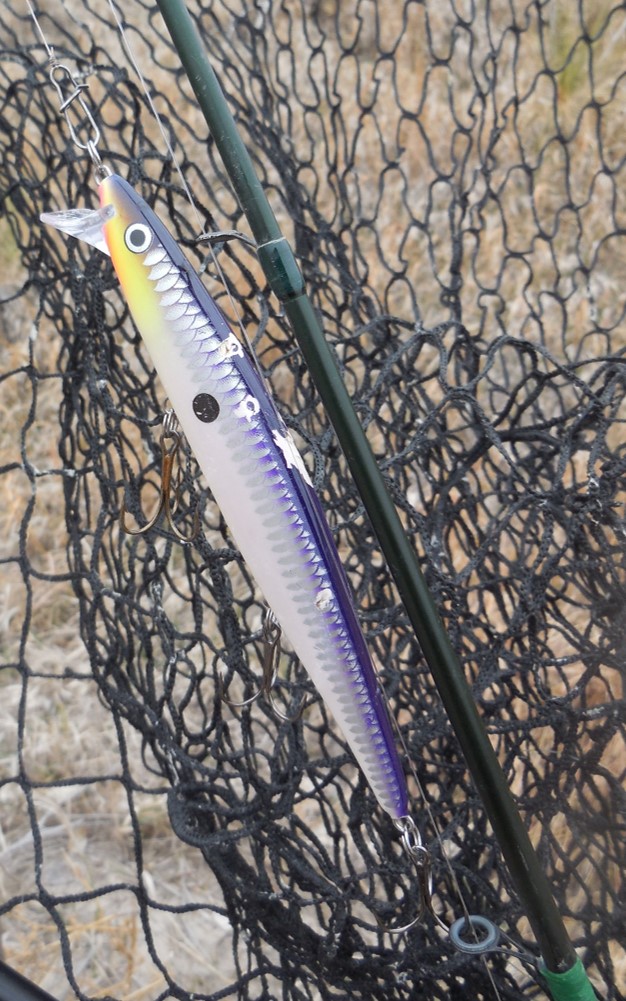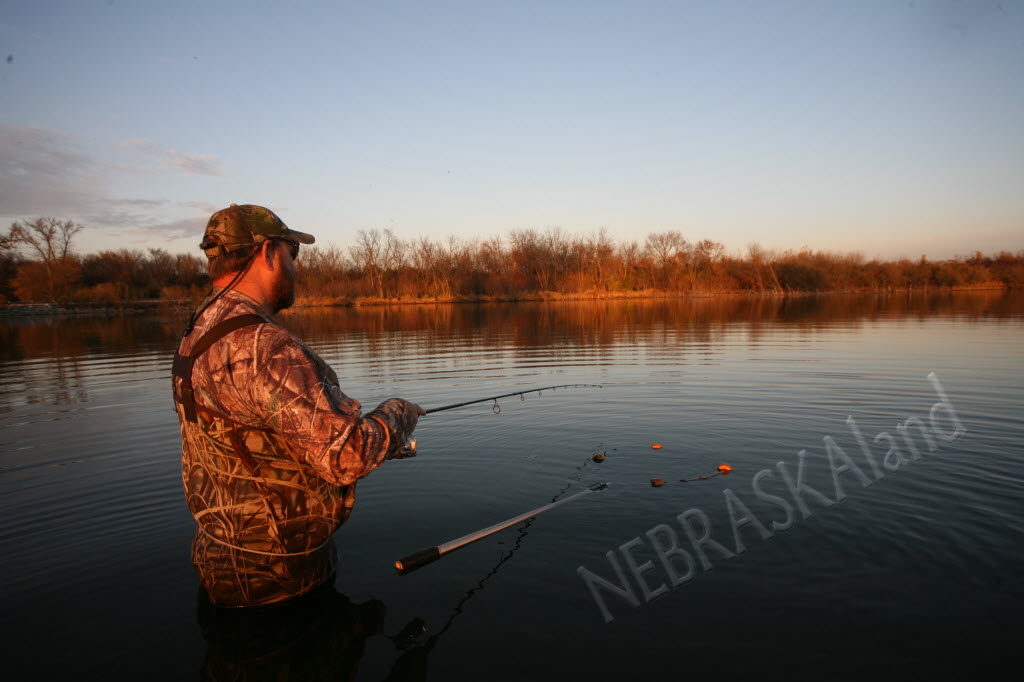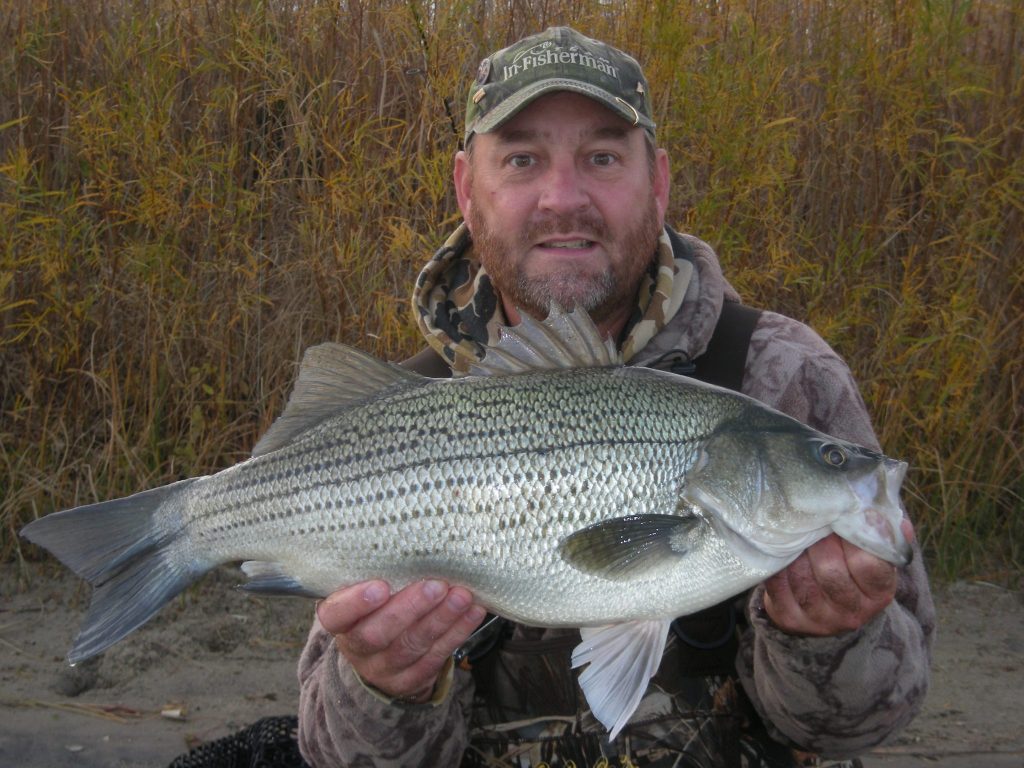Does not matter what part of Nebraska you live in, the past couple of weeks have been wet and they have been cold. Some parts of our state have already seen significant snow. To say we are in the middle of fall would be an understatement because the weather has been a whole lot like late fall/early winter. If you are one of the few who has been spending some time on the water, you know the water temps. have been dropping as fast as the rain and snow has been coming down.
My fall fishing is far from over, but the falling water temps. are not only a signal to the fish to start feeding up, they also are a signal that to keep catching fish you are going to have to adjust your presentations. Let me blog about a couple, three, things I always keep in mind while fishing through the fall:
Yes, as the water cools I will begin to shift my attention to cool-water and eventually cold-water species. Sure the warm-water species are still catchable, and you all know we will be pulling them through holes in the ice here in a few weeks, but it is a fact that cool-water and cold-water species remain more active, and easier to catch, as the water cools. For example, my shore-based, flathead catfish fishing in the fall comes to an end as those fish migrate towards deep water wintering areas, but when that happens I begin to spend more time targeting walleyes. Eventually, I will get a hankering to dry off a muskie or two before the water gets hard and given the chance I will target some big trout right up until ice starts forming along the shoreline. Adapt and adjust, if you want to keep catching fish, you gotta do it.
I will not say that I ignore panfish in the fall, but I know that fall is one of the best opportunities each year to catch some of the biggest, fattest, predator fish. I love my panfish as much as anyone and throughout the year spend a lot of time targeting panfish, but in the fall I want something big, something bad, predator fish! I have blogged about it many times, but am going to say it again now: Big baits = Big fish! I believe in that all the time, but most especially believe it in the fall. The predator fish I am targeting are trying to put on the most weight, take in the most energy, that they can now to get ready for winter and for next year’s spawning activities. If large prey is available, they will eat it.
How big is “big”? Bigger than most of you fish with.
How do I know that?
Wandering the aisles of a popular sporting goods store recently, I could find a variety of colors and numbers of one of the smallest baits I would consider throwing right now, but the larger sizes of the very same popular bait WERE NOT EVEN IN STOCK! I know why they were not in stock–because they do not sell as many of them, because I am one of the few potential customers that would even consider throwing a bait that large. Most sporting goods stores are marketing to the masses.
Food habits studies of a variety of species of predator fish have shown that the width of the throat is what limits the size of prey a fish might eat. Up until the size where it will get stuck in its throat, a predator fish will try to consume a prey item and in fact might even prefer prey items approaching that size. It is not impossible for our predator fish to eat prey items up to 50% of their own length, and in fact they commonly will consume prey items up to 30%, 40% of their own length!
Jethro, grab your calculator and do a little ciphering. . . . That 20-inch bass you wanna catch? That fish will think nothing of scarfing down an 8-inch prey fish. A 28-inch walleye? How about throwing a 10- or 11-inch bait? Wanna catch & release a 40-inch muskie this fall? Baits over a foot long would not be out of the question!
Now, I will always tell you that what predator fish are eating depends on what is available, usually what is most readily available. In some Nebraska waters right now, that may mean an abundance of smaller baitfish is the target of every predator fish. Always recognize those predator/prey interactions as they will give you ideas of not only where to fish, but what presentations you should be using in those areas. However, size is relative. Young-of-the-year (YOY) baitfish are all grown up now, they are a lot larger than they were in the summer, and if you use baits that match the size of those baitfish, and even larger, you might be surprised at what you catch.
Don’t be scared. Big baits catch fish, big baits catch big fish.
How fast to fish is always a process of trial and error. The faster baits can be presented while still triggering bites, the more water can be covered putting those baits in front of more fish. But, sometimes a person has to slow down to get bit. I hate to make generalizations because there are always exceptions, but generally as the water cools in the fall, I fish slower and slower. Ultimately, in late fall and then through a hole in the ice, vertical presentations rule.
How slow? With some horizontal presentations in late fall, I will reel about as slow as I can make myself turn a reel handle; as slow as possible with the bait still working properly. For example, with crankbaits or spinnerbaits, as slow as possible and still have the baits wobbling, blades spinning. Then, even slower. Stops and pauses may be necessary as the water cools.
Remember, fishing requires patience!
I know our recent weather has been, at the least, a discouragement to spending some time on the water. In fact, it may impact the fall bite, but it ain’t over yet, not by a long shot! Keep those baits in the water, big baits, slow ’em down, you might be surprised at what happens.

The post Go Slow, Go Big, or Go Home appeared first on NEBRASKALand Magazine.
















